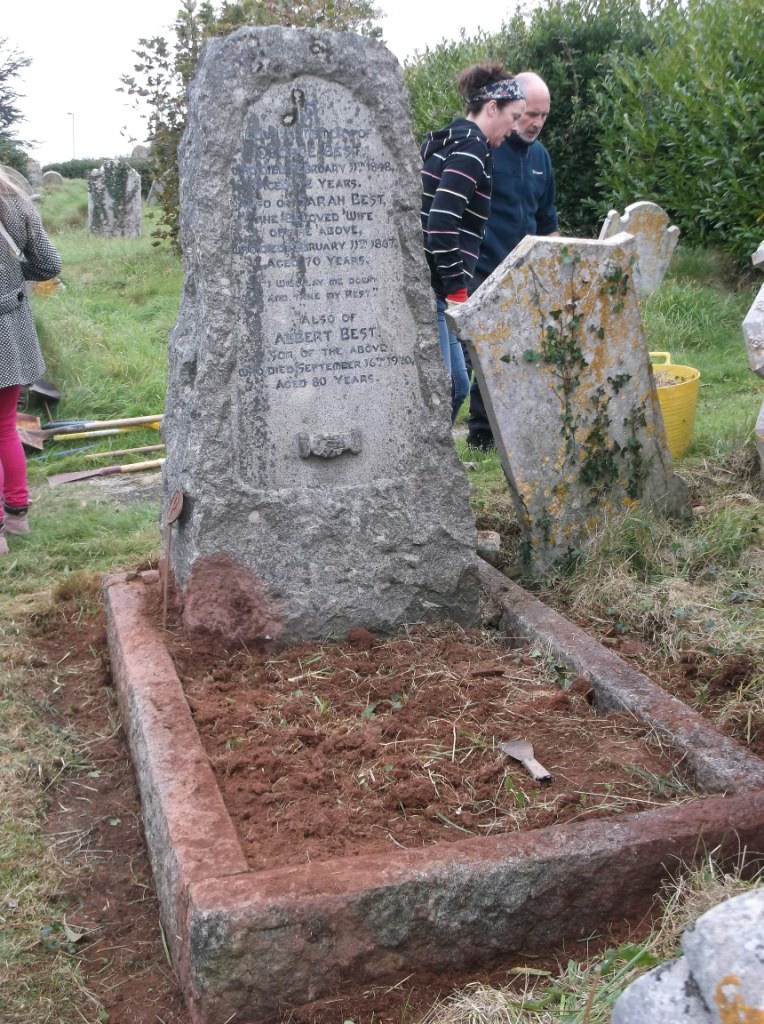Teignmouth Cemetery (15th February 2023)
Rick Purnell, Press Officer writes ….
Concealed Social History revealed in Grave Yard
Neil Howell, an active member of the Friends of Teignmouth Cemetery gave an illustrated talk to Teignmouth Probus club’s 2nd February monthly meeting about the restoration work being undertaken but more particularly revealing our ‘lost’ history of ‘Those who Dwell Within’.
Teignmouth Old Cemetery was established in 1856 as a direct result of the 1852-1885 Burials Acts requiring environmentally safer ‘out of town’ locations as ‘green spaces’ for quiet peace, rather than local church yards. Over the years some 12,000 have been interred here. This vison was lost with the location falling into serious neglect in the 1950’s becoming overgrown with brambles, ivy and self-seeding trees – nature taking over. The Friends of Teignmouth Cemetery was formed in 2017 to preserve this 12-acre site from ‘development’ and restore the Victorian Vision and remembering our history.
As each grave has been restored, members have been researching the story of who it is that ‘Dwell Within’. The ‘library’ now has some 70 or so accounts but members were told the tale of 4 of the more interesting so far.
Mrs Leah Laforgue (nee Lee), Thomas Abel Brimage Spratt, Albert Best & Robert Arthington.
Leah Lee was the daughter of a wealthy Teignmouth Draper as a single woman moved to Switzerland becoming a governess to the Berlin Court fluent in French & German. She met a young dashing Frenchman, Jules Laforgue an adviser to Empress Augusta. Jules is regarded as the father of modern Free Verse. They married in 1886 but both soon died of T.B. There is a connection to the famous English poet, T.S.Eliot who as a young man was greatly influenced by the poetry of Jules and is said to have sparked his genius.
Admiral T A B Spratt, RN of woodway House Teignmouth was famed for his cartography. His detailed maps of Crimea assisted the was effort, of Turkey helping to locate the lost city of Troy and Crete leading to the location of Phaistos Palace part of the lost Minoan Empire as his mapping showed a 20 foot drop on one side of Crete because of the destructive ‘super volcano’. He was an explorer and polymath discovering the Pygmy Elephant in Malta a member of many learned societies - Geographical, Zoological an Indiana Jones of his day. He spent his last years in Teignmouth, following malaria, he died in 1888. His mapping of the Teign estuary & port was used by Isambard Kingdom Brunel for his railway endeavours.
Albert Best 1840-1920 a born & bread Teignmouthian, an apprenticed plumber who became a leading Civil Engineer. His works include much of Teignmouth’s water works & supply system, building Brentford Reservoir Dartmoor (Paignton’s water supply) but also Shaldon’s clock on the green. In 1919 The Teignmouth Post article said he employed 20 craftsmen at his works in Somerset Place. To this day, there are examples of his cast iron fire hydrant covers around the town bearing his company name A Best Ltd. He was also a social Historian publishing his diaries of every-day life of his times.
Robert Arthington 1823-1900 Philanthropist and millionaire miser inherited a fortune from his Quaker parents dedicated his life to the improvement of ‘mans lot’. His work in forming a new town and community in Liberia bears his name Arthington the birthplace of the infamous 22nd President Charles Taylor. There a regular pilgrimages to his Teignmouth grave from a place called Mizoram in North West India where he is revered with an annual festival holiday bearing his name for his missionary works. His philanthropy encompassed building of hospital schools and for the repatriation of slaves from America. His last days were spent as penniless miser in local lodgings, still leaving a fortune on his death in 1900.
Vote of thanks was given by Chairman Steve Battersby who remarked that the cemetery is just next door to our meeting place and thanked speaker Neil Howell for awakening our interest in our local history.
For follow-up information go to: https://teignmouthcemetery.wordpress.com

